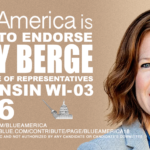Published with permission of PRESS RUN, Eric Boehlert’s new must-read media newsletter. Subscribe here.
Anxious for a political angle to the ongoing pandemic story and one that can produce instant conflict (as well as compelling pictures), the news media are showering attention on the small groups of GOP protesters who are angry about life-saving social distancing orders issued by governors to battle the Covid-19 pandemic. The right-wing, Fox News-fueled street actions come as polling confirms an overwhelming majority of Americans support the stay at home orders, designed to curb the pandemic's growing death toll. Even when restrictions are lifted, most Americans say they're not sure they'll resume "normal activities" right away.
Proving once again that every Beltway news cycle revolves around the very simple question of, 'What are Republicans angry about today?, the recent emergence of Trump-sanctioned protests has grabbed the media's attention, even though some events are drawing modest crowds.
"More than a dozen protesters gathered near the governor’s mansion in Baton Rouge Friday calling for Louisiana Gov. John Bel Edwards (D) to suspend measures designed to stop the spread of the coronavirus so people can go back to work," the Washington Post reported over the weekend. [Emphasis added.] Meanwhile, the New York Times made sure to shine a bright spotlight on a Texas protest that attracted "more than 100 people." The newspaper's print headline claimed the event was indication that protests were "sweep[ing] nation."
Most people understand that in a nation of nearly 330 million people, pro-Trump events that boast dozens of activists don’t qualify as major news. Yet news outlets seem to think small bands of angry conservatives must be treated as a big deal. The Times article completely misread the protests, suggesting they were representative of a widespread movement. (They're not.)
But, in a deeply divided nation, the size of the protest in Michigan, and the appetite in other states for more rallies, suggested that anger over the no-end-in-sight nature of the lockdowns was not limited to the far right.
In Michigan, a couple thousand people participated in a drive-by protest, where most people stayed in their cars. In a state of 10 million people, how does that suggest there's a widespread "appetite"? The Times article also provided zero evidence that the rallies featured anything but far right activists. In fact, virtually every person quoted was a hardcore Trump supporter. Why try to paint the rallies as bipartisan?
ABC News marveled that the protests were moving “coast to coast,” while conceding that a grand total of five states saw rallies over the weekend — five out of fifty states. On cable news, the word “protesters” was has been mentioned more than 150 times since Friday, according to TVeyes.
We've seen this double standard before. During the run up to the Iraq War, news outlets routinely ignored and downplayed anti-war rallies that drew tens of thousands of people. The press was very slow to cover the left-leaning Occupy Wall Street protests in 2011. Instead, during Barack Obama's presidency, it was the deep-pocketed, right-wing Tea Party movement that captivated the Beltway media's attention, as the protests were relentlessly hyped as clarion calls of common sense from the heartland.
In 2010, when Republicans used Tea Party rallies as part of the midterm election cycle, the three major television networks, ABC, CBS, and NBC, devoted 666 minutes of nightly news coverage to the movement. Compare that to 2018, when Democrats used the Trump resistance movement as part of its winning midterm strategy. For that, the networks set aside less than half as much airtime, just 247 minutes.
The Tea Party was literally created by the media. It was born on CNBC, when reporter Rick Santelli started ranting about Obama on the floor of the Chicago stock exchange, warning viewers the new Democratic president was steering the country toward a Cuban Castro-like economy. CNBC then boosted the clip incessantly ("Shot Heard Around The Word"/"Santelli's Manifesto"), while NBC led its evening newscast that night of the rant with a clip of Santelli, announcing his rant had struck a "populist" chord.
Today, indications are that the stay-at-home-order protesters, like the ones in Michigan last week, are also being promoted by deep pocketed players, anxious to stir up trouble in order to hurt Democrats, even as governors struggle with an historic public health crisis. "The whole charade was facilitated by the Michigan Conservative Coalition, a conservative political group that doubles as a front for the Michigan Trump Republicans, and promoted by the Michigan Freedom Fund, a conservative group with ties with Betsy DeVos," Mother Jones helpfully pointed out.
For now, the protesters' muddled battle cry seems to be, “Curse the tyranny of governors! But only the Democratic ones!" since several Republican governors are also holding firm on stay at home orders. None of it makes sense. Neither does the fact some protesters show up carrying assault rifles and confederate flags to protest social distancing guidelines for a pandemic.
Then again, Tea Party protests didn't make sense either. Obama hadn't even finished appointing his cabinet secretaries when conservatives took to the street to denounce the new president’s supposedly socialist agenda. Keep in mind, Obama had just won the election in a landslide. Yes, protesters showed up carrying Hitler posters. And yes, the movement was born, in part, out of a deep desire to protest on behalf of insurance companies.
It’s distressing to see, but while covering right-wing social distancing protesters, the press is making the same mistakes they made covering the Tea Party.



















